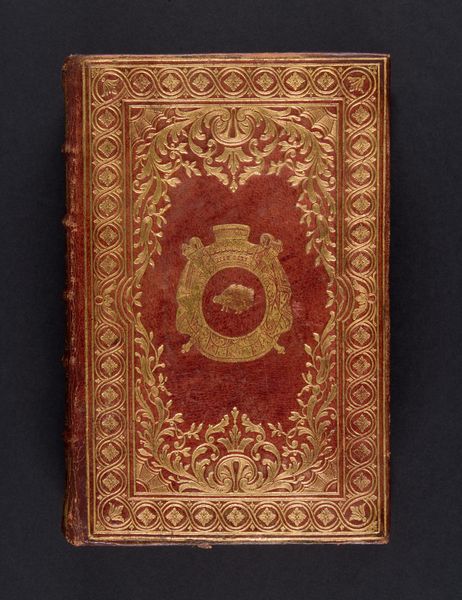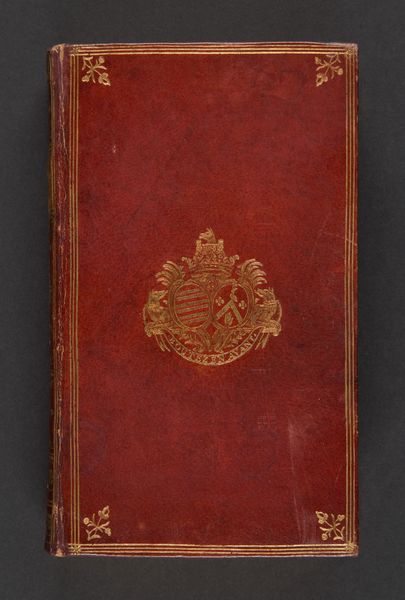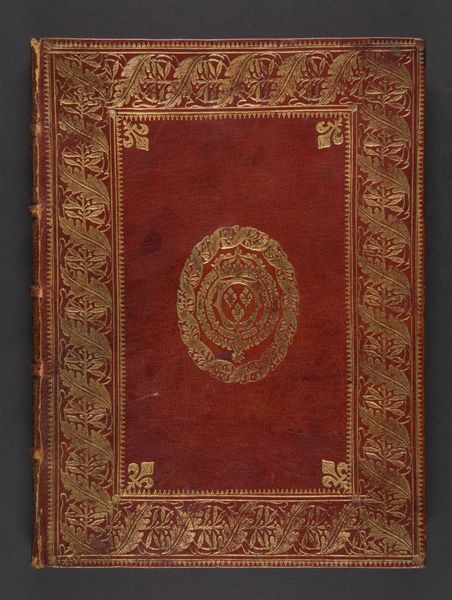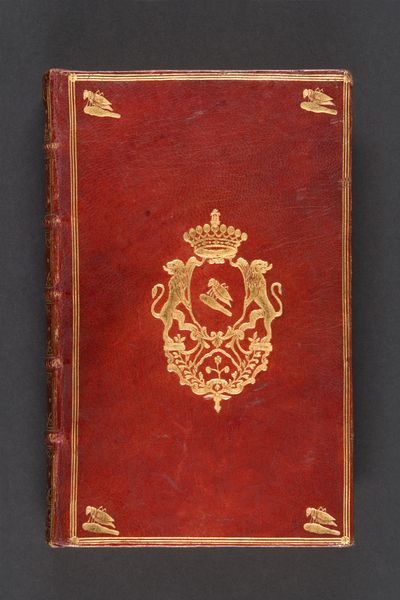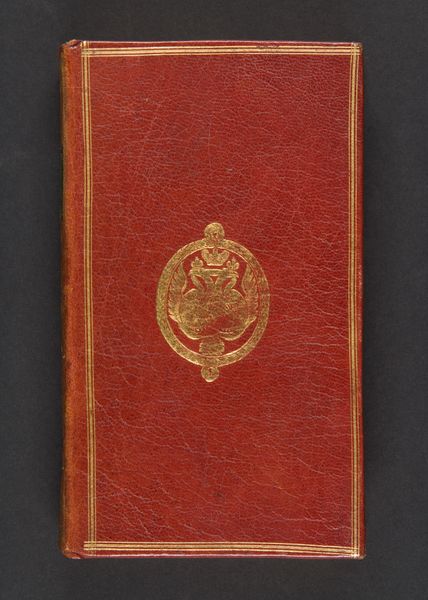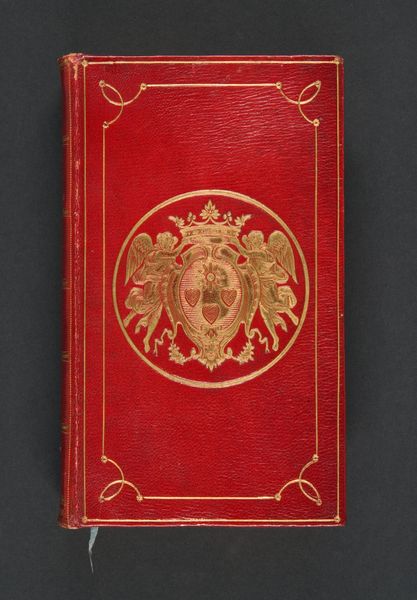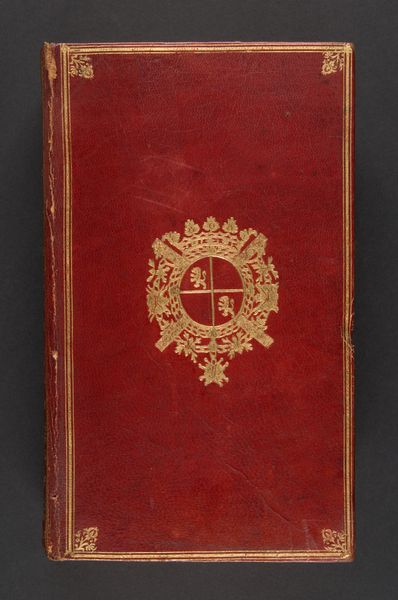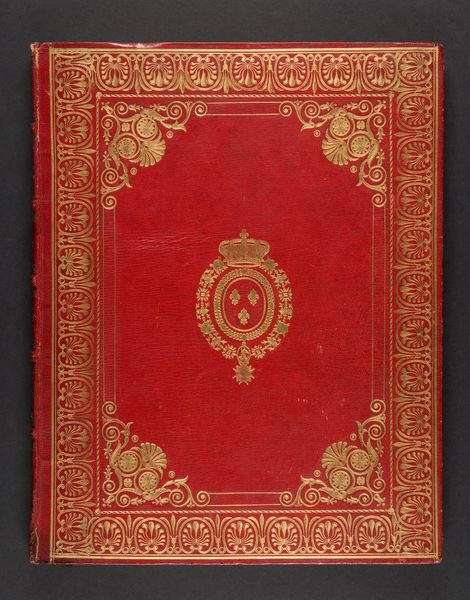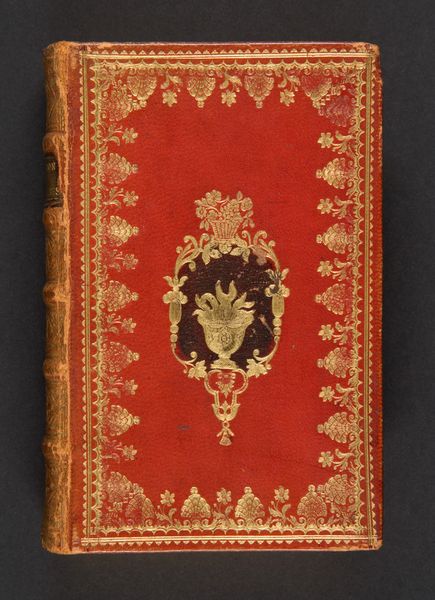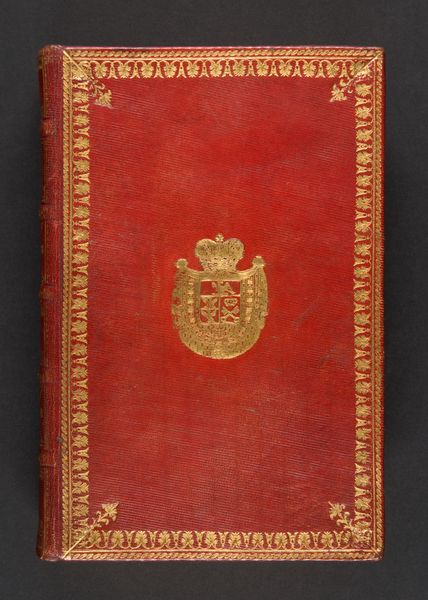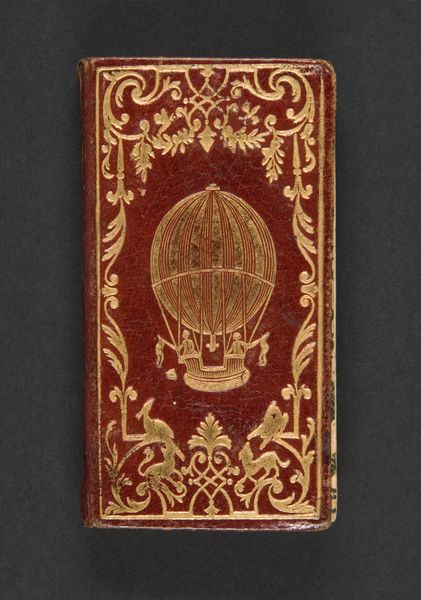
Traité de Plutarque, sur la manière de discerner un flatteur d'avec un ami et Le banquet des sept sages: dialogue du même auteur revu & corrigé sur des manuscrits de la Bibliothèque du roi; avec une version françoise & des notes 1772
0:00
0:00
Dimensions: xii, 335, [1] pages ; Height: 8 1/4 in. (21 cm)
Copyright: Public Domain
Curator: This exquisite volume is "Trait de Plutarque, sur la manière de discerner un flatteur d'avec un ami et Le banquet des sept sages," a 1772 edition of Plutarch’s works. It's currently held at the Metropolitan Museum of Art. Editor: My eye is immediately drawn to that vibrant red leather, offset by the intricacy of the gold tooling! It screams Baroque opulence, doesn't it? Curator: Absolutely! Consider how bookbinding, especially decorative art like this, acted as a class marker. To own something so skillfully and lavishly made proclaimed wealth and elevated status but, importantly, also erudition, suggesting the owner valued intellectual pursuits. Editor: It is also important to consider that not only owning these books proclaimed certain attributes for those holding them but that making the books proclaimed some details, as well. Think about the skilled labor needed, the tanneries processing leather, the gold beaters preparing leaf for the ornament. Curator: And the dialogues themselves offer insight into social ethics—Plutarch examines the nature of friendship versus flattery, debates relevant even today. We might ask how social status affects perceptions of these values and whose voices were heard in that historical conversation. Editor: It is hard not to be impressed by the craftsman’s dedication. Imagine the pressure, the time and skill it took to lay down each line of that gold detail, and how each action also was building reputation and making commerce. It’s quite striking when thinking about the nature of patronage that produced this beautiful thing. Curator: Thinking of it, I would also emphasize how texts like Plutarch circulated ideals of classical virtue and citizenship in revolutionary-era societies. Books were potent carriers of ideas. Editor: Indeed. Ultimately, this book embodies a compelling blend of philosophy, social history, and skilled craft. Each gilded element reflects labor and materials—and the status imbued through the finished product. Curator: And for me, this artifact provides a compelling look at the intersections of class, knowledge, and the complex social dynamics embedded in historical dialogues on virtue. It really captures how materiality of status also had an influence.
Comments
No comments
Be the first to comment and join the conversation on the ultimate creative platform.
